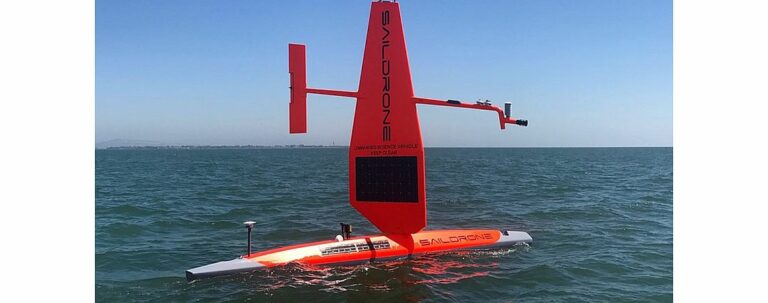Two windsurfing boards are making a tour around the Atlantic and the Mediterranean Sea; they are not just boards, but the latest invention in robotic navigation, and will measure the health of the ocean.
Last October 2019, The Oceanic Platform of the Canaries (Plocan) has released these two small autonomous sailboats on the coast of Gran Canaria, loaded with all kinds of scientific sensors that are going to take data on the ocean acidification that causes the increasing presence of carbon dioxide in the atmosphere. This is the Atl2med experiment (acronym for “From the Atlantic to the Mediterranean”), involving twelve scientific institutions in Germany, France, Portugal, Belgium, Finland and Spain.
The sailboats are two marine drones, capable of navigating both autonomously and piloted via satellite from its control center in Alameda (California, USA), nearly 9,500 kilometres from the place where they have been launched to the Atlantic, on the east coast of Gran Canaria.
Latest technology
Their “windsurf board” look hides the latest technology in sailing: the two sailing drones are powered by a peculiar wing with a tail that optimize the thrust of the wind, idea taken from the design of the British Richard Jenkins, who devised this technology to beat the speed record of sailing on land with the Greenbird, a racing car that toured the Nevada desert at almost 203 km/h ten years ago. Their resistance has been tested few months ago. In the beginning of this year, the small autonomous ships completed one of the toughest tests possible at sea, circumnavigating Antarctica and traveling almost 22,000 kilometres.
The two ships have now a scientific purpose, on a route that will take them first to Cape Verde, and then return to the Canary Oceanic Time Series Station (a buoy in the Atlantic located 130 kilometers north of Gran Canaria) heading towards Madeira, crossing the Strait of Gibraltar, following the coast of Spain and France, surrounding Italy through Sicily and ending the trip in Trieste.
Currents
“The objective of this mission will be to collect information on carbon dioxide and ocean acidification and to study the currents on the coast, their relation with the water temperature in the atmosphere and with acidification and water biology, “explained one of the operators of the two robotic ships, Katie Cornetta. She also has highlighted the interest that the twelve scientific institutions involved in this mission have in collecting parameters related to climate change, and in understanding its effect on the presence of CO2 in water, sea surface temperature, or changes in wind and current regimes in the ocean and the Mediterranean.
“Many things are going to be measured, but CO2 level will be the main parameter. Understanding how it works (its cycle between atmosphere and ocean) is one of the key problems in studying climate change,” added the director of Plocan, Octavio Llinás, who underlined that the data obtained will also be crossed with those provided by several fixed buoys from the collaborating countries.
Participants
The participants of the Atl2Med project are: The Helmholtz Center for Oceanic Research (Geomar) and the Helmholtz Coastal Research Institute in Germany; the French Research Institute for the Exploitation of the Sea (Ifremer), the National Center for Scientific Research (CNRS) and the Oceanographic Laboratory of Villefranche, in France; and the National Institute of Geophysics and Volcanology (INGV) and the National Institute of Oceanography (OGS), in Italy ; the Hydrographic Institute of Portugal; the European Delegation of the Global Ocean Observation System (EuroGOOS), Belgium; the European Infrastructure of the Integrated Carbon Observation System (ICOS-OTC) of Finland; and the Oceanic Platform of the Canary Islands, Spain.
Theinitiative also contributes to the implementation of the Belém Statement by fostering international cooperation for common research interests.

